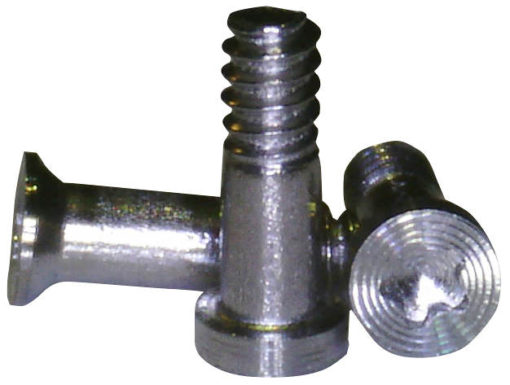 Stanley has launched a tiny screw and thread pair (known as a micro-fastener) for waterproof and vibration-proof wearables and portables. “Since water-resistant standards play a big role in making expensive handheld and wearable digital devices more durable, the industry has adopted the IPx7 rating, which protects against immersion in water for 30 minutes at a depth of 1 meter,” said the firm.
Stanley has launched a tiny screw and thread pair (known as a micro-fastener) for waterproof and vibration-proof wearables and portables. “Since water-resistant standards play a big role in making expensive handheld and wearable digital devices more durable, the industry has adopted the IPx7 rating, which protects against immersion in water for 30 minutes at a depth of 1 meter,” said the firm.
Stanley SpiralockThe screws combine two technologies: A modified thread (branded ‘Spiralock’, see diagram) for holes that imparts an anti-vibration characteristic to conventional bolts and screws – and is used in larger form in spacecraft. It also, claims the firm, has a strong centring action.
In detail, Spiralock “adds a 30° wedge ramp at the root of the thread and mates with standard 60° male thread fasteners. This removes the need for nylon-based patches or other anti-vibration countermeasures,” said Stanley.
Stanley 87° headWaterproofing comes modifying the screw to create an 87° under-cut beneath the head (see diagram, where it is labelled 86°) instead of the usual 90°, or a countersink.
The edge of the head then provides a single circular line-contact with the housing to keep out water, dust and dirt – but only if the head is at right-angles to the housing, which it will be due to the centring action of the Spiralock thread in the hole, said the firm.
“Stanley standardWhen torqued to specifications, standard screws are not perfectly perpendicular – most are a couple of degrees off-axis and therefore provide a gap where fluid can enter,” claimed Stanley. “Although the head design has been available for years, this is the first time it has been combined with Spiralock’s modified locking thread profile to create moisture sealing that exceeds the IPx7 .”
Lastly, the company has used a semi-flat head on the screws, styled to be in keeping with wearables, and it has created a countersunk version.
According to the firm, standard routes to IPx7 sealing tend to be nylon or Teflon-based substances in the form of washers or liquids that either seal the threads, or seal underneath the screw head.
“Sealing just the threads may not protect the multiple layers of components that are in a typical fastened joint. This is because the components being fastened together are in the path of water before the protective sealant,” said Stanley. “Sealing under the head is preferable because it is the first barrier against moisture. Yet this is the method that, in some cases, results in an over-spray and discoloration caused by the application process.”



